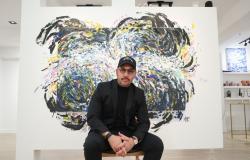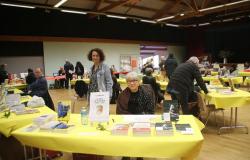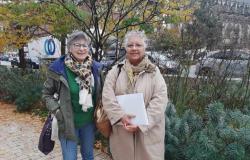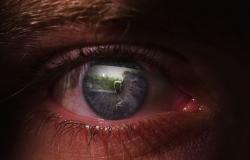What if Napoleon had won at Waterloo? What if the Berlin Wall had never fallen? Welcome to the fascinating world of uchronies, these historical fictions which explore the twists and turns of time and the possibilities of the past. From classics like “The Master of the High Castle” by Philip K. Dick to television series like For All Mankind, these counterfactual stories appeal to a wide audience with their ability to shake up our representations and reinvent history.
But beyond their playful and speculative dimension, can uchronies constitute a relevant educational support for developing students’ historical thinking? This is the question that we will explore in this article, defending the idea that these fictions, as long as they are used in a rigorous and structured manner, offer stimulating opportunities for exercising critical thinking in history.
By inviting us to explore the possibilities and contingencies of history, uchronies would promote a form of counterfactual reasoning, at the heart of historical thought. They would also make it possible to question the status of discourses on the past, by highlighting their constructed and interpretive dimension. So many assets which make these speculative stories valuable allies for history teaching concerned with training in critical thinking, provided they are used with the necessary precautions.
Uchronies, an invitation to explore the possibilities of history
Counterfactual reasoning: an approach at the heart of historical thought
Counterfactual reasoning, which consists of considering alternative scenarios based on a modification of a historical event, is not the prerogative of fiction authors.(1) It is in reality an intellectual approach to heart of historical thought, which we find in many historians. By imagining other possibilities, by questioning bifurcations and contingencies, the researcher refines his understanding of historical processes and causalities.(2)
Uchronias as thought experiments: exploring critical moments in history
From this perspective, uchronies appear as stimulating thought experiments. By modifying a key event and considering its consequences, they highlight the role of contingencies and bifurcations in history. They remind us that history is not a linear and determined process, but that it is made up of possibilities that did not happen, of “future pasts” that could have come true.(2)
A tool to better understand the logic and issues of a period
Far from being simple free games, uchronies can thus help to better understand the logic and issues of a historical period.(3) By exploring the possible consequences of an event, they highlight the forces present, the tensions and dynamics at work. They invite a more detailed analysis of the actors, their motivations and their strategies, by considering other scenarios.
Uchronies, a support for questioning the status of historical discourses
Uchronistic fiction as a mirror of historical representations and interpretations
But uchronies are not only tools for historical analysis. They also reflect the representations and interpretations that we project onto the past.(4) By imagining other scenarios, the authors of uchronies express, consciously or not, a point of view on history, anchored in their time and their culture. Their stories thus mirror the way in which a society tells its story and understands its past.
A lever for approaching the epistemology of history: how is knowledge about the past constructed?
Therefore, uchronies offer an interesting support for addressing questions of the epistemology of history with students, namely how knowledge about the past is constructed. (5) What is the part of interpretation and subjectivity in the work of the historian? By highlighting the constructed and situated nature of historical narratives, uchronies invite reflection on the status of historical knowledge.
Develop a critical reading of historical accounts: uchrony as a “workshop of doubt”
With this in mind, the study of uchronies in class can serve as a starting point for developing in students a critical reading of discourses on the past. By questioning the narrative and interpretive choices of authors, by confronting them with sources and historical knowledge, students learn not to take the stories offered to them at face value. Uchrony thus becomes a “workshop of doubt”, which exercises their vigilance in the face of any form of historical narrative.
Exploiting uchronies in class: precautions and educational ideas
Pitfalls to avoid: the temptation of “what if”, the risk of confusion between reality and fiction
However, the use of uchronies in class is not without precautions. We must first avoid the temptation of the easy and anecdotal “what if”, which would reduce history to a simple speculative game. We must also be vigilant about the risk of confusion between reality and fiction, by clearly recalling the imaginary status of the stories proposed. The challenge is not to rewrite history, but to understand it better.
Activities to practice counterfactual reasoning in a structured and rigorous manner
Therefore, it is important to offer students activities that allow them to exercise counterfactual reasoning in a structured and rigorous manner. (5) They can, for example, be asked to analyze the choices of divergence made by the author, to assess plausibility in light of available sources and knowledge. We can also invite them to imagine an alternative scenario themselves, by explaining and justifying their hypotheses.
Cross-referencing uchronies and historical sources for a critical approach
More broadly, it is a question of always combining the study of uchronies with that of historical sources and works. By confronting the fictional story with traces and analyzes of the past, students learn to situate uchrony in the field of possible interpretations.(6) They thus practice a distanced and critical reading, which brings imagination and historical knowledge into dialogue. .
Exploring the possibilities of the past
Ultimately, uchronies appear to be valuable allies for developing students’ critical thinking in history. By inviting them to explore the possibilities of the past, to question the status of historical discourses, they promote a reflective and distanced approach to historical knowledge. Provided they are used with rigor and method, in a constant back and forth with established sources and knowledge, they offer stimulating educational opportunities.
A conclusion which invites us to rethink the place of imagination and creativity in the teaching of history. Without renouncing scientific rigor, there is undoubtedly much to be gained from bringing together rationality and imagination, to train citizens capable of thinking about history independently and lucidly. In this sense, uchronies open fertile paths for a history teaching concerned with commitment and emancipation. It’s up to us to borrow them with inventiveness and discernment.
Illustration: AI-generated – Flavien Albarras
References
1-ANGENOT, Marc, 2020. Counterfactual reasoning in history. Argumentation and Discourse Analysis [en ligne]. 15 October 2020. No. 25. DOI 10.4000/aad.4696. [Consulté le 19 novembre 2024].
https://journals.openedition.org/aad/4696
2-DELUERMOZ, Quentin and SINGARAVÉLOU, Pierre, 2012. Exploring the field of possibilities. Counterfactual approaches and unhappened futures in history. Review of modern & contemporary history. November 27, 2012. Vol. 593, No. 3, pp. 70‑95. DOI 10.3917/rhmc.593.0070.
https://shs.cairn.info/revue-d-histoire-moderne-et-contemporaine-2012-3-page-70?lang=fr
3-The EFR, Members of, 2017. What if? Uchrony and counterfactual reasoning. Lectures in social sciences [en ligne]. December 9, 2017. [Consulté le 19 novembre 2024].
https://semefr.hypotheses.org/2260
4-BRÉAN, Simon, 2013. Uchrony as conjectural cultural history. Write history. History, Literature, Aesthetics. 15 November 2013. No. 12, pp. 133‑141. DOI 10.4000/elh.362.
https://journals.openedition.org/elh/362
5-LEGLAND, Pierre, 2018. The use of counterfactual history in the classroom to work on causality and historical awareness with students. . May 22, 2018. pp. 116.
https://dumas.ccsd.cnrs.fr/dumas-01808218
6-DELUERMOZ, Quentin and SINGARAVÉLOU, Pierre, 2016. For a history of possibilities. Counterfactual analyzes and unhappened futures [en ligne]. The Threshold. ISBN 978-2-02-103482-0. [Consulté le 19 novembre 2024].
https://shs.cairn.info/pour-une-histoire-des-possibles-analyses-contrefactuelles-et-futurs-non-advenus–9782021034820?
See more articles by this author






